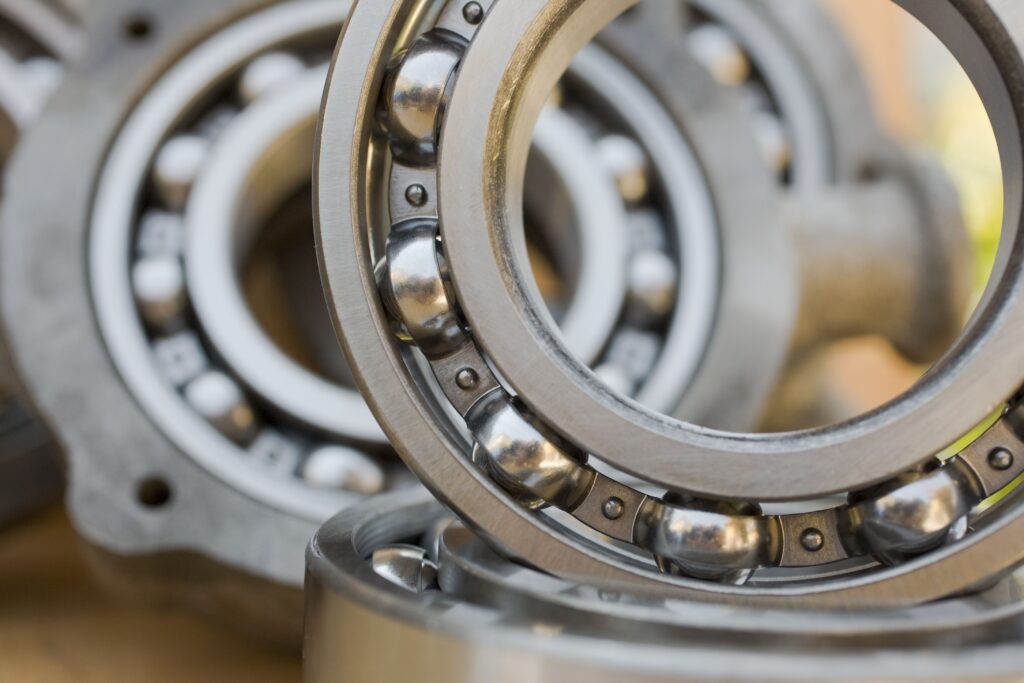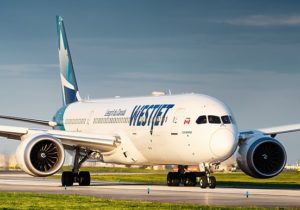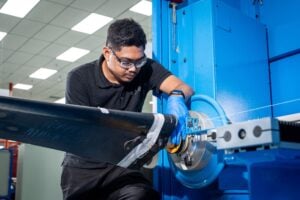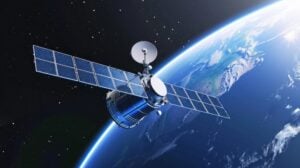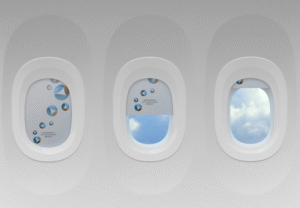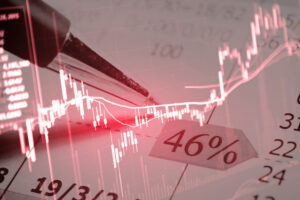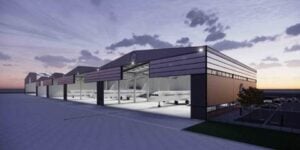In light of the AOG Technics scandal, what is being done to ensure the quality of USM?
download the January 2023 edition of the AviTrader MRO magazine
By David Dundas
Our industry is highly regulated by authorities and internal company rules to ensure the safety of aircraft at all times. Every task of an aircraft mechanic, and all components of an aircraft, are meticulously documented. The mechanic must rely on the fact that the installed used parts comply with all regulations and are airworthy. The recent scandal surrounding AOG Technics demonstrates that there is a criminal element who will look to find loopholes to circumvent regulations and deceive unsuspecting buyers. The situation involving this London-based company which is accused of providing jet-engine parts with counterfeit documentation has led to the grounding of nearly 100 aircraft. Regulators and airlines are still evaluating the extent of this problem, which could encompass thousands of airline parts distributed by AOG Technics.
AviTrader has spoken with various experts from the industry on how they ensure that all components, especially used ones, and their certificates comply with regulations, and their responses are highly reassuring in an industry where safety is at the root of all actions and processes.
Some airlines seem reluctant to install USM or restrict its use to non-critical parts. We wanted to find out why this might be the case.
The overall consensus is that airlines do not necessarily need to be wary of using USM, primarily because of the strict regulations that help to mitigate safety risks. In the opinion of Max Lutje Wooldrik, Founder & CEO – APOC Aviation: “By ensuring rigorous certification processes, enhancing traceability, and maintaining strict quality control, USM can be a reliable and cost-effective option for aircraft maintenance, without compromising safety or operational efficiency.”
Simon Walker, SVP Technical, AerFin feels that the company’s customer base will show that the number of airlines restricting the use of USM has fallen over the past two decades. He feels this is because airlines get accustomed to installing USM and are more accepting of the additional technical and trace paperwork that it brings about. However, he does note that: “There will be times when airlines only install new for certain parts or specific critical areas of the aircraft. This could be driven by the reliability or durability of a part that may only be demonstrable by installing new parts and consequently ensuring the technical integrity for that function of the aircraft.”
“There will be times when airlines only install new for certain parts or specific critical areas of the aircraft.” Simon Walker, SVP Technical, AerFin

Michael Garcia, VP Commercial, Kellstrom Aerospace accepts that where airlines are concerned, there is no room for compromise in any aspect of the maintenance cycle to the point where some airlines exercise caution or limit the use of used serviceable materials (USM) to non-safety-critical parts. Kellstrom also recognises the significance of prioritizing safety. Garcia comments that: “Airlines, driven by various key performance indicators (KPIs), particularly focus on reliability, where the association of ‘new’ with warranty and extended life cycles holds sway among consumers. Kellstrom addresses these concerns by not only partnering with OEMs for product distribution but also engaging in the aftermarket repair network, delivering a cost-effective, just-in-time solution. Our commitment to maintaining rigorous testing and quality standards, akin to OEM manuals, ensures the reliability of USM.”
Jim Maguinness, Quality Manager, EirTrade Aviation feels that the attitude of airlines is very much based on a misconception, stating that: “just because an asset has been retired, doesn’t mean that its parts have lost their value or can no-longer be used, in fact it’s just the opposite. All aircraft components, new or used, require regular maintenance to ensure that they meet all material regulations set forth by the aviation authorities.”
“Just because an asset has been retired, doesn’t mean that its parts have lost their value or can no-longer be used, in fact it’s just the opposite.” Jim Maguinness, Quality Manager, EirTrade Aviation

One valid reason raised to explain airlines’ reluctance to use USM comes down to one word, trust. Trust that the carrier has in its USM parts supplier. However, Kevin Flynn, Sr. Director of Quality and Operations, VAS Aero strikes a positive note: “I believe that overcoming an operator’s fears of using quality USM parts comes down to the trust that operator has in their USM parts supply partner and the demonstrated quality control processes that vendor has put in place to assure that USM replacement parts are both airworthy and have the proper pedigree ensuring they are approved parts. The economics of USM utilization versus OEM parts procurement (and associated supply chain backlogs) make a compelling case for USM, to be sure.”
We wanted to know what were considered key factors for airworthiness when sourcing USM.
Responses have made it very clear that ensuring safety and operational efficiency are critical when considering using USM. Consequently, it is vital that a comprehensive assessment of the materials’ integrity, previous usage history, adherence to industry standards, and compliance with regulatory requirements is carried out to ensure their suitability.
David Miret Mora, Technical Director, AJW Group refers us to: “The current Parts 21J and Parts 21G regulations, for example, [which] establish the certification procedures and requirements for the design, production, and airworthiness of aviation products. The main purpose of these regulations is to ensure products meet stringent safety and quality standards before they are put into service.” He adds that: “This is vitally important in maintaining the integrity of the aviation industry and safeguarding the well-being of all stakeholders. When using USM material, the same principle is applied, therefore the USM quality and airworthiness should be equal or higher.”
“The main purpose of these regulations is to ensure products meet stringent safety and quality standards.” David Miret Mora, Technical Director, AJW Group

Max Lutje Wooldrik at APOC Aviation remarks that proper storage and handling history are essential to maintain part integrity and support the decision-making process for their use in aircraft maintenance. He further explains: “When sourcing and inspecting used aircraft materials, it is crucial to verify their traceability and certification to ensure they meet airworthiness standards. Inspections must assess the part’s condition, life limit, and compatibility with the aircraft. The supplier’s reputation, the existence of warranties, regulatory compliance, and a thorough cost-benefit analysis are also vital considerations.”
When Simon Walker at AerFin was asked, he advised that: “The Key factors that end users routinely demand is integrity of the paperwork – where and who has operated that part, how as it been removed, is there a clear audit trail from the removed aircraft to the repair shop and what specific repairs have been performed for the recertification and restoration of its airworthiness. It is worth noting that end users and airlines keep approved vendor lists to ensure USM is being repaired at trusted repair shops which are routinely audited and have a robust quality management system so airlines can be confident of the reliability of the subject part being installed.”
At Kellstrom Aerospace, priority is assigned to establishing a trustworthy partnership. Michael Garcia makes it clear that: “Consumer confidence in used serviceable materials (USM) hinges on the assurance that these parts have been handled by extensively trained professionals, adhering to all relevant manuals and stringent quality standards. The possession of correct and up-to-date manuals, coupled with a vetted high-quality system, becomes pivotal in the decision-making process for sourcing USM. Here at Kellstrom as a supplier with over 40 years of experience, ensuring a dependable track record and maintaining exceptionally high-quality standards, helps to instil utmost confidence in the supply chain network.”
“Consumer confidence in used serviceable materials (USM) hinges on the assurance that these parts have been handled by extensively trained professionals.” Michael Garcia, VP Commercial, Kellstrom Aerospace

Very much along the theme of trust, VAS Aero suggest that it pays to know what training certificates and repair/inspection/quality credentials the USM vendor’s personnel possess, advising that a reputable USM parts vendor will readily supply this information. Kevin Flyn mentions that: “There are several key factors that should be considered. First is understanding the history of the part and expectations for its current condition. What is the origin of the part? Is there a clear ownership chain? What is the operational history of the part and what environmental stresses was it subjected to? What was the original projected life span of the part and where in that lifecycle is it? What is the maintenance history? Are all the part’s traceability and maintenance documentation acceptable? Secondly, what inspection procedures has the part been subjected to? For some non-safety-critical parts, simple visual inspection by a qualified technician is sufficient to determine its current condition. For other, more flight-critical materials, more advanced diagnostic tests and repairs may be required, based on the OEMs CMM or AMM, in which case a visual inspection is not enough. Has the quality, condition and serviceability of the material been certified, and by whom? VAS algins itself with proven suppliers that are continually monitored to ensure exceptional product quality and on-time delivery.”
EirTrade Aviation stresses the importance of a back-to-birth tracing assessment being carried out on the USM. “This is crucial for the inspection process and for our team to assess the quality and airworthiness of the material, and only then will they be eligible for the aftermarket. The components must have an Airworthiness Release Certificate from an approved maintenance organisation,” Jim Maguinness advises.
“In addition to this, the aviation authorities require that airlines and MROs have a robust vendor approval procedure in place. Suppliers should have an independently audited quality system specific to aircraft parts supply, such as, ASA-100, TAC2000, ISO 9001 2015 or a national standard. Airlines should audit and monitor their suppliers for compliance with their own requirements, which may differ from the industry standards,” Maguinness added.
We also wanted an opinion on what the industry standards and best practices to follow were when dealing with USM in order to maintain safety and quality
Avion Express, part of the Avia Solutions Group, sources new and USM only from approved suppliers. Aistis Urbonas, VP Technical at Avion Express underlines that: “Quality and safety are the most crucial and decisive factors in the aviation industry, and they unquestionably encompass the evaluation of any aircraft material. All USM is individually checked to ensure it meets the mandatory EASA requirements. Moreover, every team member is appropriately trained for their role, ensuring a high standard of safety.”
David Miret Mora at the AJW Group is very clear with his ideas. “A comprehensive model that integrates safety, quality, and reliability is essential. Each element is crucial not only for regulatory compliance but also for effectively mitigating safety risks. Additionally, it is important to closely monitor reliability aspects to ensure the end product, if using used serviceable material (USM) aligns closely with the expected lifespan of new materials.”
Strictly following regulatory guidelines is top of the list for Max Lutje Wooldrik, APOC Aviation’s CEO. This, he says, can be assured through thorough documentation and certification of used serviceable materials and the implementation of robust quality assurance programmes, pointing out that inspections and testing of USM for integrity and compatibility are essential, alongside maintaining a detailed traceability system. He adds that: “at APOC, we believe a risk management framework, ethical sourcing practices, and strong supplier relationships are also critical for safety. Additionally, customer transparency and a commitment to continuous improvement are key to upholding industry standards and best practices for maintaining quality and safety with USM.”
EirTrade Aviation highlights that as an AFRA-accredited company, it adheres to the AFRA Best Management Practices (BMP) Guide for disassembly and recycling of aircraft, parts, and materials, pointing out that this is the leading standard for dismantling aircraft in a safe, efficient, and environmentally friendly manner, and meets its clients’ ESG requirements.
Quality Manager, Jim Maguinness comments: “EirTrade provides a live report to customers which provides full transparency of the components removed from the aircraft at any point in time during the disassembly process. We also comply with the ASA-100, TAC2000, and other systems that are based on the Federal Aviation Administration (FAA) AC-0056, which establishes a voluntary industry distributor programme. With regard to packing and transportation, removed parts are cleaned before being packaged in ISPM-15 standard crates for transport to accredited MRO specialists or put into stock.”
Kevin Flynn at VAS Aero was very clear in his company’s policy. “A robust, reliable, and dependable USM provider will follow the guidelines of FAA AC 00-56B, ASA 100, AFRA, and other ISO, AS/EN9100 series programs that set necessary quality requirements for the aviation industry. Additionally, any refurbishment that may be required should be performed by specially trained technicians and certification conducted by authorized and credentialed specialists who’s repair station has capabilities to perform those repairs and functions.”
Flynn added that “In addition to its airworthiness certificate, the USM part must be accompanied by complete traceability back to an approved source, an airline as an example, and repair history documentation. To paraphrase the movie line, ‘show me the documents’. Only then can a USM part be deemed airworthy and confidently be returned into service as a needed replacement.”
And finally, we wanted to know what common challenges were faced when verifying the authenticity and condition of used aircraft materials, and how these challenges can be addressed.
Max Lutje Wooldrik at APOC Aviation makes it clear that common challenges in verifying the authenticity and condition of USM include ensuring traceability, preventing counterfeit parts entry, and accurately assessing wear and tear. “These challenges can be addressed by implementing stringent inspection protocols, utilising advanced technology for part verification, maintaining meticulous records, and working with trusted suppliers. At APOC our staff have regular training on counterfeit recognition and compliance with international standards, such as those from the FAA and EASA, which are also essential elements in maintaining the integrity of the USM supply chain,” he explains further.
VAS Aero’s Kevin Flyn admits that determining the origin of a part can be difficult at times, pointing out that, depending on its age and location, an individual aircraft may pass through several operators/lessors prior to being removed from service. He states that: “Knowing who handled the dismantlement of an aircraft from which the USM part originated is beneficial, too. Are they a certified MRO or up to date with the AFRA BMP as examples to ensure proper methods, training and tooling is used? You’ll want to work with a teardown and parts harvesting specialty company that is careful about “crossing all the T’s and dotting all the I’s.” A diligent, best-practices-focused USM partner will take the steps necessary to provide a complete ownership and maintenance history of the materials – from source to condition to airworthiness certification.”
He also ended with some sage words: “Assuring authenticity and condition of USM parts is really all about the art of documentation and making sure that all documentation accompanies the purchased materials. An experienced USM parts provider knows what to look for and where, and how to connect the dots through proper documentation.”
“Assuring authenticity and condition of USM parts is really all about the art of documentation.” Kevin Flynn, Senior Director of Quality and Operations, VAS Aero
EirTrade offer words of caution in advising that parts that are offered on the market which are not from an approved source are a threat to safety, so it is imperative that unserviceable parts are segregated from serviceable parts. The company makes it clear that parts that cannot be made serviceable in accordance with current maintenance data must be quarantined and/or put beyond use in a manner that ensures they cannot be used. However, Jim Maguinness ends on a positive note. “Vendor evaluation, performance monitoring, and supplier accreditations should ensure that the supply chain is secure.”
AJW Group’s David Miret Mora also adopts a cautious approach to the challenges. “To address these challenges clarity is crucial. A standardised industry format, similar to EASA Form 1 or FAA 8130, would enhance transparency by facilitating easy identification of work undertaken and materials replaced. Encouraging collaboration and information sharing among industry stakeholders can further establish best practices for material identification and reporting, thereby leading to a more reliable system.”
His solution comes in the form of one word – clarity – which he feels is crucial. “A standardised industry format, similar to EASA Form 1 or FAA 8130, would enhance transparency by facilitating easy identification of work undertaken and materials replaced. Encouraging collaboration and information sharing among industry stakeholders can further establish best practices for material identification and reporting, thereby leading to a more reliable system.”
From all the above responses, it is difficult to see what more could be done not only to ensure the quality of USM, but also its authenticity. A combination of highly experienced staff, robust operating systems, and opaque traceability ‘back to birth’ of aircraft parts are clearly crucial.

